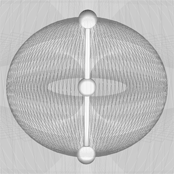



































relational inquiry regarding meaning » reality
• Anaximander's indefinite apeiron into which definite elements relatively self-cancel
• Hegel's presuppositionless logic of pure being (?) —see Houlgate, S. (2005) An introduction to Hegel: Freedom, truth and history, 2e [Blackwell]. I would need to know more about Hegel before claiming this, but I get the impression that he has systematized the laws according to which objective attention (this Project's P-node) formally characterizes reality, culminating in a tautology that I would call empty of content. The logic is circular like a snake that swallows its own tail. It's helpful to see this, as it reveals that meaning can't come exclusively from an objective characterization of reality. And perhaps this is why Hegel saw the importance of history's progression toward the otherwise formally-posited Absolute.
• Husserl's transcendental approach could be a model for this Project's method of formal analysis, where our formal indication involves his phenomenological reduction, the aim of which "is to analyse the correlational interdependence between specific structures of subjectivity and specific modes of appearance or givenness. When Husserl speaks of the reduction, he is consequently referring to a reflective mode that departs from an unreflective and unexamined immerson in the world and 'leads back' (re-ducere) to the way in which the world manifests itself to us" (Gallagher, S., & Zahavi, D. [2012] The phenomenological mind, 2e [Routledge] p. 27).
• Kant's noumena (?)
• Krauss, "A Universe from Nothing." Physicist Lawrence Krauss argues that the sum total energy of the universe is zero (factoring in negative gravitational potential energy). Oddly enough, Dennett famously analogizes consciousness to a center of gravity. Of course, Krauss's discussion of the universe occurs within a different language domain than this Project's discussion of reality, and so to see any analogy/correspondence involves working out this difference in language domains.
• philosophy: metaphysics, ontology. Using this Project's nodal terms, perhaps idealism prioritizes self, naturalism prioritizes world, and process philosophy prioritizes dynamic.
• Sat-Chit-Ananda — see Hart, D. B. (2013) The experience of God: Being, consciousness, bliss [Yale UP]
Inasmuch as Heidegger is doing ontology as phenomenology (since "only as phenomenology, is ontology possible" [60/35*]), and inasmuch as his ontology is "fundamental ontology taking as its theme that entity which is ontologico-ontically distinctive, Dasein" (61/37), and inasmuch as Dasein's mode of being is necessarily Being-in-the-world, from his existential analytic of Dasein we might take Dasein's Being-in-the-world to be analogous to this Project's I-phase addressing reality in terms of meaning/experience, and we might take the "constitutive items in its structure" (78/53) to be analogous to this Project's J-, W-, and K-nodes, like so:
*Quotes are taken from the Macquarrie and Robinson translation of Being and Time, with English/German pagination.
The I-phase could be taken as the unconditioned Absolute of the great "I AM" (Exodus 3:14), which is Aquinas's ipsum esse subsistens (Summa Theologiae, I.3.4 and I.4.2). When the essence of God is existence, God just is existence; God is the act of being itself. Combining that with "God is Love" (1 John 4:8 and 16), we get the doctrine of the Holy Trinity, each person of which is distinct only in relation to the other two. (See Augustine On the Trinity 9.5.8 where he draws an analogy between the human mind [as made in the image of God] and the Trinity: mind=mens=Father; self-knowledge=notitia sui=Son; self-love=amor sui=Spirit.) It is the Absolute "I AM" relating to itself, and it's this relation that's essentially Love. God the Father sent out God the Son to the farthest limit of creation, thereby gathering all of creation within God's Love amid God the Spirit, the breath They share. The way the persons of the Trinity relate is similar in logical form to the way the nodes of the I-phase relate—only the terms experiencer-experiencing-experienced are replaced with lover-loving-beloved. (see Bishop Robert Barron's brief Word on Fire course named "The Mystery of God")
• interpenetration of God and the world in Nicholas of Cusa's paradigmatic diagram
• Bodhidharma (c. 475-525) The Zen teaching of Bodhidharma [R. Pine, trans. North Point Press 1987]. Bodhidharma equates all appearances with mind, the true nature of which is emptiness.
• Davis, B. W. (2021) Nothing matters [The Philosopher 109(1)]
• James, W. (1904) A world of pure experience [The Journal of Philosophy, Psychology and Scientific Methods, 1(20), 533-543]
• Nishida, K. (1921) An inquiry into the good [M. Abe & C. Ives, trans. Yale UP 1990]
• Nishitani, K. (1961) Religion and nothingness [J. Van Bragt, trans. UC Press 1982]
• Sekida, K. (1975) Pure existence. In Zen Training [Weatherhill]. Sekida touches on the condition of "absolute samadhi: the condition of total stillness, in which 'body and mind are fallen off,' no thought stirs, the mind is empty, yet we are in a state of extreme wakefulness. 'In this stillness, or emptiness, the source of all kinds of activity is latent. It is this state that we call pure existence'" (12). Sekida also discusses Heidegger—critical of Being and Time, while seemingly more sympathetic to later Heidegger.
• śūnyatā (emptiness)
_additional texts
• Dilthey's philosophy of existence [W. Kluback & M. Weinbaum, trans. Bookman Associates 1957]—discussing three types of metaphysical worldview: naturalism, idealism of freedom (including subjective idealism), and objective idealism which "attempts to integrate naturalism and subjective idealism by viewing the mind and empirical reality as an integrated, intuited whole" (95)
• Houlgate, S. (2005) From indeterminate to determinate thought. In An introduction to Hegel, 2e [Blackwell]. Perhaps Houlgate's account of Hegel's logic as "free and—systematically, though not historically—presuppositionless" (31) can give insight into how the conceptual forms of this Project's terms (as formal indications) relate to each other in such a way that they self-cancel.
_symbol & metaphor
• axis mundi & omphalos
• element: fire (creative potential)
• Kabbalah's "veils of negative existence": Ayin, Ein Sof, Ohr Ein Sof
• light
• magick: wand (creation)
• seed; spermatozoon; "germ in the egg"
